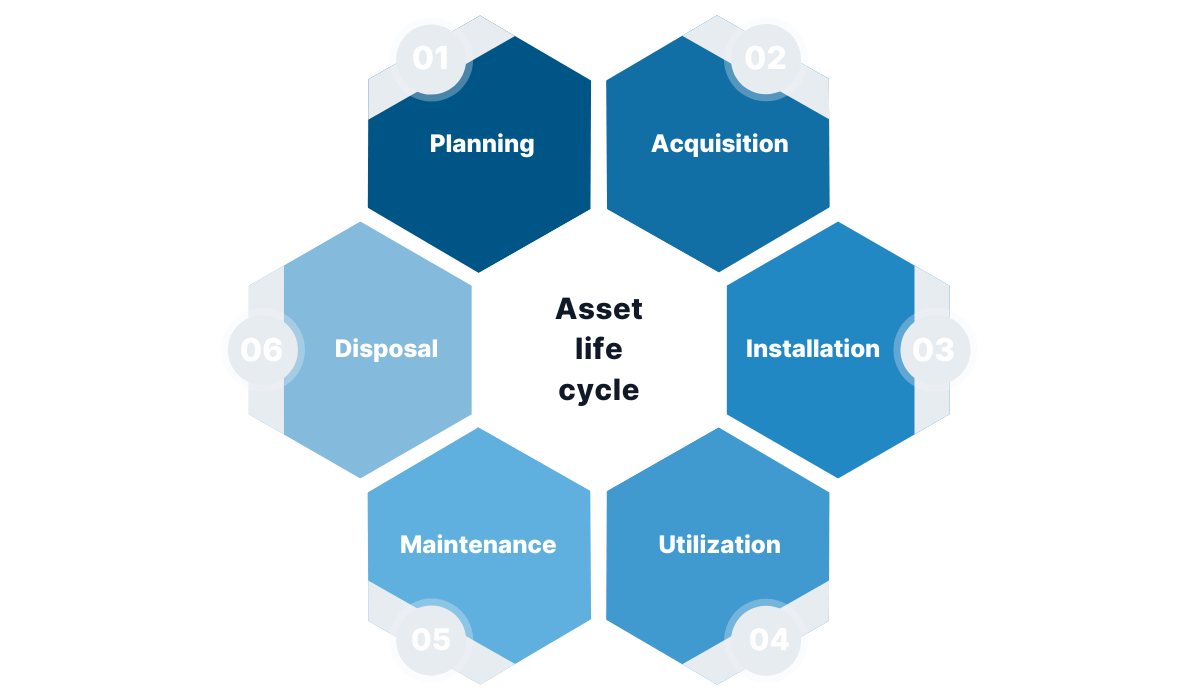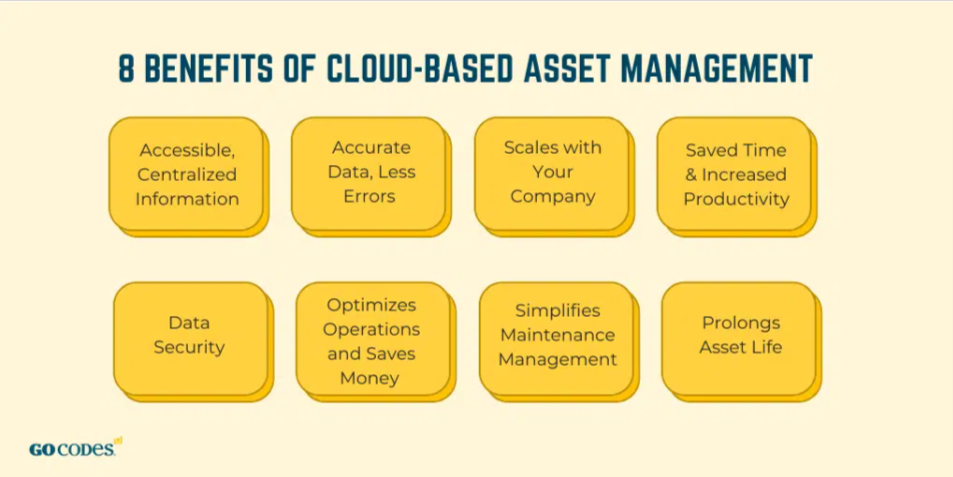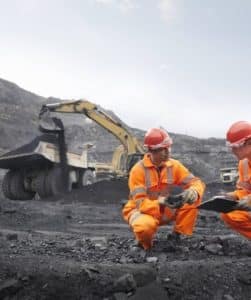In the simplest of terms, an asset is something you own. And if you own a lot, as is the case with the majority of businesses, keeping track of it all gets tricky and cumbersome.
However, this doesn’t change the fact that asset management is crucial for your company’s productivity and profitability.
Luckily, there is a way to streamline asset tracking. Namely, asset control is a simple yet efficient and cost-effective way to stay on top of your assets.
Keep on reading to find out more about asset control, its benefits, and how it works. We’ll also show you how to choose asset control software that is right for your business.
In this article...
What Is Asset Control
Let’s begin by defining asset control.
To put it simply, asset control encompasses systematization, monitoring, inspection, and keeping track of all crucial information regarding a company’s assets.
As such, it is a key aspect of asset management.
Asset control is not a new concept by any means.
Businesses of all sizes have always had to monitor their assets in one way or another.
Knowing what a company has or doesn’t have, and what it needs, has always been essential for operational efficiency.
However, what has changed over time is the way companies keep track of their assets. Just like with everything else, the approach to asset management has modernized.
At the turn of the 21st century, pen and paper were replaced with spreadsheets.
The days of stacks of notebooks filled with endless information about a company’s property—with their potential for data loss—are behind us.
Going digital for asset control meant fewer data entry errors, but the system was not perfect.
Originally, it still required manual entry, which made it hard to keep the records 100% accurate or up to date.
Fast forward to today, and we have asset control software at our disposal.
Specialized software solutions—and we’ll get into exactly how they work later—allow companies to coordinate across different locations, enable better asset allocation and, consequently, reduce project delays and cut unnecessary costs.
Moreover, asset control solutions contribute to the prevention of asset loss and theft by letting the whole team keep an eye on the equipment in real time, all the time.
You’re probably aware of the fact that having a single piece of equipment stolen can lead to project delays, customer dissatisfaction, and money loss.
Therefore, asset control protects your assets and plays a crucial role in creating an effective, productive, and profitable work environment.
Let’s explore the benefits of proper asset control in the upcoming sections.
Why Is Asset Control Important
As we have already pointed out, effective asset control has many advantages, from protecting your assets to improving operations and even reducing costs.
Here’s what the most important ones entail.
Safeguards Assets Against Theft
Unfortunately, theft is rather commonplace in the construction industry.
For instance, a survey of relevant data over the past five years has shown that, in that period, equipment theft to the tune of $7.7 million dollars has taken place on Memorial Day weekend alone—and that’s just in the top three most affected states (Texas, Florida and California).
According to the Construction Equipment Guide, this is because “construction equipment and machinery are relatively easy to steal and get rid of in a shadowy worldwide market, including a black market.”
The consequences of this are profound.

As you can see, less than 25% of the stolen equipment and materials are recovered, which is one of the reasons why they’re such a desirable target.
However, asset control mitigates the probability of theft. By tracking your assets, you always know where they are and who is using them, which makes it less likely for them to slip under the radar.
Maximize Asset Utilization
Similarly, keeping track of your assets in real time gives you valuable insight into how often a specific piece of equipment is used.
With that information in mind, you can make better-informed decisions about your asset allocation.
In other words, you can optimize asset utilization and get the most out of your equipment.
For instance, you can provide timely maintenance for your equipment and bring in replacements for the machinery that requires repairs from other jobsites.
As you already know, unplanned downtime in any industry can seriously harm asset productivity.
To give an example, a survey has shown that in the automotive industry, one minute of “stopped production or downtime costs an average of $22,000”.
And the construction industry is no different. With unplanned downtime, your expenses can snowball.
However, by having an insight into your assets’ productivity, you can schedule preventive maintenance during planned downtime instead of disrupting work.
Not only will this reduce project delays, but it will also prolong your equipment’s lifespan.
Improves Employee Coordination
If you want to be effective at coordinating your employees, communication is key.
However, it is easy to overlook this fact in hectic work environments like construction sites, where multiple workers handle a single tool or piece of equipment.
And when a jobsite isn’t well-coordinated, soon enough, it becomes hard to track where a tool is, or who was the last to use it. This is not only frustrating, but it also slows everyone down.
A high-quality asset control solution eliminates that kind of issue.
It shows everyone on your team where a particular asset is, who’s using it, and when it’s scheduled to be returned, among other valuable details.
So, for instance, if an item is shown to be in particularly high demand, a similar one can be brought in from a different jobsite where it is not as needed.
In short, when such information is readily available, it’s easier for employees to coordinate their efforts, communicate well and, as a result, boost their efficiency and productivity.
Streamlines Business Operations
A sound asset control system will optimize your general operational efficiency.
Your team will know precisely when to order new equipment or schedule preventive maintenance because they’ll have all the crucial data in front of them.
Moreover, asset control solutions display information such as the number of assets in the company’s possession, their value, and location in real time.
Many also allow you to enter notes or messages, and schedule tasks regarding a particular asset.
For example, if a bulldozer needs an oil change, with the right asset solution, you can add that task and assign a worker to carry it out.
Click here to see how this works with our solution, GoCodes Asset Tracking.
To conclude, asset control is not just a collage of numbers but a system that helps you make sense of all that information—it helps you manage your assets.
Having such a system available to everybody on the team definitely makes everything run more smoothly.
Reduces Costs and Increases ROI
All the benefits we’ve covered so far lead to one conclusion: asset control saves you money in the long run.
Reducing theft or loss of equipment means there’s less need for buying or renting additional machinery.
Furthermore, maximizing asset utilization means that you’ll no longer be purchasing duplicate equipment while your existing assets are being underutilized.
Finally, regular preventive maintenance extends the lifespan of your equipment.
This makes your initial investment in the piece worth it for longer—in other words, it increases the ROI on that particular asset.
All in all, you shouldn’t disregard the benefits of having a good asset control system if your goal is to not only optimize your team’s workflow, but also increase profitability.
How Does Asset Control Work
After learning about what you can get from a good asset control system, you might still be wondering—but how does such a system work, exactly?
Despite providing you with complex and valuable data, the system is actually quite simple.
Asset management solutions rely on attaching asset labels or tags to company assets and using an asset-tracking system to record, track, and manage those assets.
All you need is good asset management software.
In fact, asset control solutions help you oversee your assets throughout their life cycle.

The planning phase is essentially an analysis of what your company needs or will need in the future.
An asset control solution provides you with charts and reports on your asset utilization and shows where you stand, informing your decisions on asset acquisition.
Installation or deployment entails integrating the new assets into the system. In other words, this is the phase of employee education, documentation input, and general preparation for use.
Another important part of this phase is tagging the new piece of equipment so you can monitor it later on.
During the utilization phase, which is the longest stage of an asset’s life, you monitor the assets’ performance.
Here, you can rely on various metrics to get the full picture, such as ignition on and off times, miles, fuel use, etc.
These metrics give you the full scope when it comes to the efficiency of your equipment utilization.
Thanks to them, you and your team can plan ahead and schedule preventive maintenance, which will surely prolong your asset’s lifespan.
After you’re sure you made the most out of your asset, and there’s no fixing it, it’s time to part with it. The disposal of an asset represents the end of its life cycle.
This is the time to wipe all the data pertaining to it that you’ll no longer need from your system, and replace the item.
To sum up, although this might seem like a lot of work at first glance, asset control is by no means complicated.
In fact, with time, it becomes an integral part of your workflow and makes the whole operation run smoother.
What to Look For in Asset Control Software
Finally, let’s move on to some tips on what to look for in asset control software.
First and foremost, no business is the same; therefore, your asset control software should be customizable so that you can tailor it to your needs.
In other words, an overly complex system will do you no good, especially if you don’t need half its features. You need software that will make everyone’s job easier, not more complicated.
For example, our own solution, GoCodes Asset Tracking, is highly customizable.

As you can see in the picture, GoCodes Asset Tracking allows you to adapt your Asset Summary screen according to your needs, by adding or removing Asset Data fields.
If a specific category isn’t relevant to your asset—simply remove it!
Secondly, an ideal asset control software should be cloud-based. This means that you, or anyone on your team, can access the data anytime, anywhere, and from any device.
Cloud-based software has many benefits for operational efficiency. Take a look at the picture below:

Overall, cloud-based software simplifies asset tracking and management. Consider this when looking for asset control software.
However, the most important aspect of efficient asset control software would probably be its intuitiveness.
In other words, an asset control system should be easy to set up and use.
GoCodes Asset Tracking is just that!
The system includes custom patented rugged QR Tags that are attached to an asset.
They contain information on that asset, and by scanning the code with GoCodes Asset Tracking’ app on your device, you can access that information.

Moreover, this system lets you update asset information, record its present location, and check it in and out.
And all information on company assets is stored in GoCodes Asset Tracking’ centralized database.
Anyone on the team can access it, but you can also implement access control through different levels of authorization.
All in all, there is no one-size-fits-all solution when it comes to choosing an asset control software.
However, if your software is customizable, cloud-based, and easy to use, it will make asset management so much easier and your productivity so much higher!
Conclusion
To sum everything up, people have always been aware that tracking a company’s assets is crucial for the success of a business.
The methods for asset tracking have changed over time as the process was perfected.
Today, we have technology available that makes asset control more efficient than ever before.
In fact, asset management software really makes a difference when it comes to reducing unnecessary costs and increasing overall operational efficiency.
So, if you’re not currently using one, consider the advice from this article and start looking for asset control software today.









